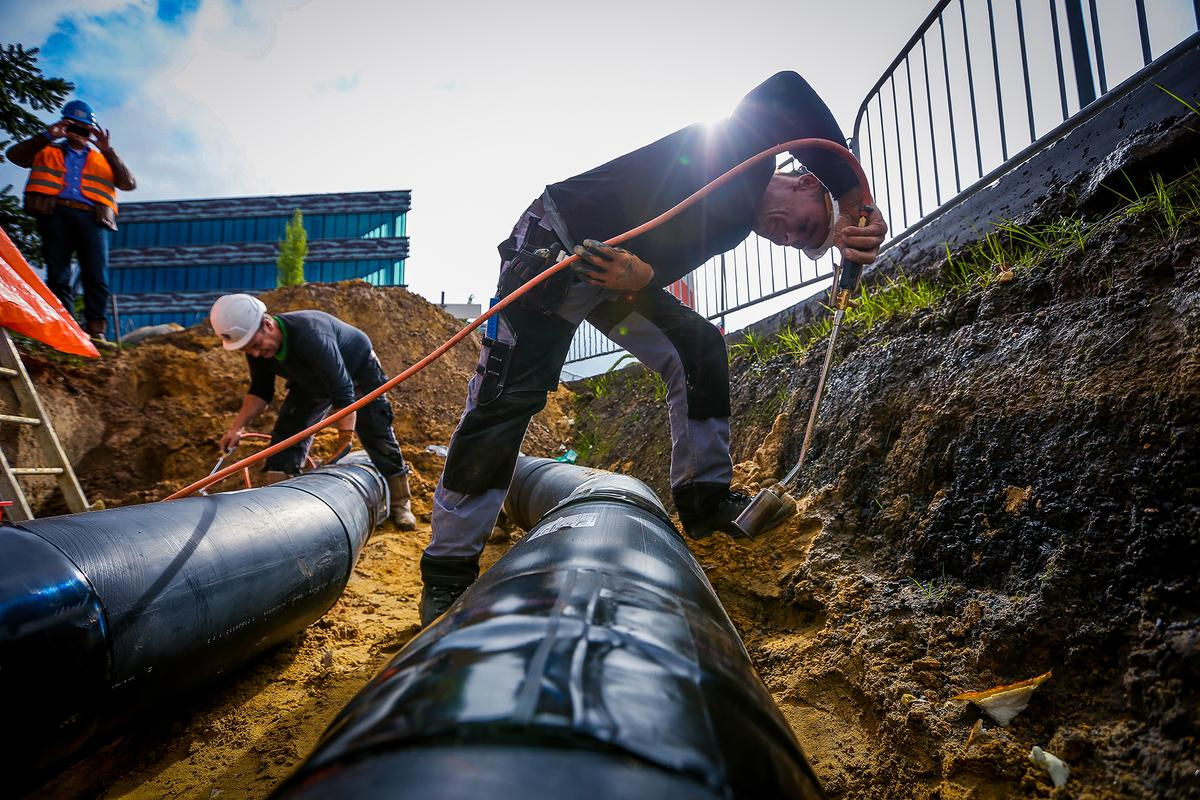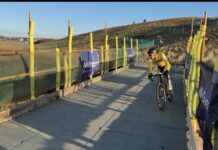
By Hugh Moore, project manager at Clyde Gateway
When I travel to Paris this week for the next meeting of the D2 Grids Steering Committee, an Interreg North-West Europe funded project, I will be updating fellow members on the incredible progress being made in Glasgow on our Green Regeneration Innovation District (GRID) which includes Clyde Gateway’s own pilot for an innovative and sustainable renewable energy project.
This fifth generation district heating and cooling grid works by exchanging thermal energy between buildings with different needs. The aim is to reduce the temperature that energy is supplied at to decarbonise it further and by using heat pump technology, the system will manage the heating and cooling needs of new buildings.
The pilot project focuses on Magenta Business Park, a new urban office park in Glasgow, and is one of five European pilot projects and the second 5GDHC project in Scotland. While this is a European Union funded project, the participants were agreed in advance of Brexit negotiations being finalised and the UK leaving the EU.
The participants span the continent, where it is led by Mijnwatr B.V. in the Netherlands who have brought together a range of partners from Glasgow, Plymouth in England, Bochum in Germany, Paris-Saclay in France and Brunssum in the Netherlands.

With D2 Grids, the idea is that instead of sending high-temperature water an ambient loop with low-temperature plastic pipe network full of water around 15C is used. This is a two pipe system, one warm, one cold. These pipes will begin at an energy centre at Scottish Water‘s existing wastewater treatment works across our smart bridge, through Magenta business park and then on to individual businesses.
With the water heated to around 15C, it means that when buildings require heat, it starts the heating process at a higher temperature. Having both a warm and a cold pipe, instead of a central energy source, the heat pumps at the customer end engage when a building wants heat and take water from the warm pipe and use it to transport it to the required areas. As it delivers this heated water, it then returns cold water to the cold pipe.
Another element, and key renewables component of the project, will be the introduction of solar PV to manage the interface between the power and thermal grids. The solar PV will effectively run the heat pumps, store up the batteries and use off-peak electricity when required.
For businesses at Clyde Gateway, this means a reduction in energy prices by using a metered system where businesses only pay for the energy they use. It also offers them a ready-made component to add to their environmental strategy, allowing occupants to be based at premises with significant reductions in greenhouse gas emissions and a drastically improved carbon landscape.
We are already thinking ahead to the prospect of new buildings joining the network in Glasgow’s East End, with the modular system allowing for easier connections compared to expensive high temperature steel insulated pipes that would require delivery and installation.
We hope to complete this ambitious project in Scotland’s largest city by the end of 2023. While I am excited to present our progress with partners in Paris, I am equally thrilled to update the local community at our industry and policymaker workshops in the Cuningar Loop woodland park in June.
Half of Europe’s heat demand could be met by district heating systems in the continent in 2050, compared to 13% today, and I am proud that Clyde Gateway, Scotland’s most ambitious regeneration project, is a key player in delivering this sustainable source of energy.







